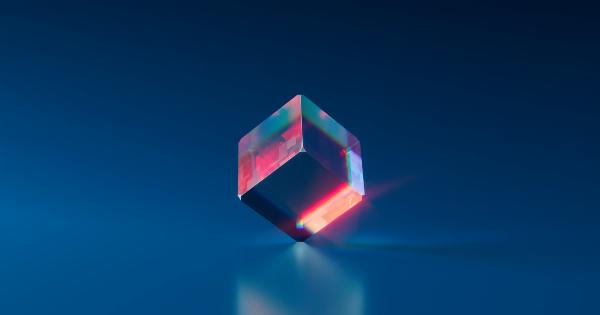Genital hair removal is a common practice for both men and women. Removing hair from the genital area can be a personal choice, for hygiene reasons, or to enhance sexual pleasure. The procedure can be done at home or by a professional.
If you are considering genital hair removal, it is important to know what to expect.
Types of Genital Hair Removal
There are several ways to remove hair from the genital area. The most common methods include:.
- Shaving – using a razor or electric shaver to remove hair
- Waxing – applying hot wax to the skin and then pulling the hair out
- Laser hair removal – using a laser to target and destroy hair follicles
- Electrolysis – using an electric current to permanently destroy hair follicles
Preparing for Genital Hair Removal
Before you undergo any type of genital hair removal, it is important to properly prepare your skin and hair. Here are some tips for preparing for genital hair removal:.
- Trim your hair before shaving or waxing – if your hair is too long, it can be more difficult to remove and may cause pain
- Take a warm shower or bath – this can help soften the hair and make it easier to remove
- Exfoliate – using a gentle exfoliating scrub can help remove dead skin cells and prevent ingrown hairs
- Avoid using lotions or oils before waxing – these can create a barrier between the wax and your skin, making it more difficult to remove hair
- Avoid tanning or sun exposure before laser hair removal or electrolysis – if your skin is sunburned or tanned, it can increase the risk of side effects
During Genital Hair Removal
The process of genital hair removal can be uncomfortable and painful, depending on the method used. Here is what to expect during each type of hair removal:.
Shaving
Using a razor or electric shaver to remove hair can be done at home. Here are some tips for shaving the genital area:.
- Trim the hair first – this will make it easier to shave and reduce the risk of nicking the skin
- Apply shaving cream – using a moisturizing shaving cream can help reduce irritation and razor burn
- Use a clean, sharp blade – using a dull blade can cause pain and increase the risk of cuts
- Shave in the direction of hair growth – this can reduce the risk of ingrown hairs and irritation
- Rinse with warm water – after shaving, rinse the area with warm water and pat dry with a clean towel
- Avoid applying products with fragrance or alcohol – these can cause irritation and burning of the skin
Waxing
Waxing involves applying hot wax to the skin and then pulling the hair out. Here are some tips for waxing the genital area:.
- Choose the right type of wax – hard wax is less painful than soft wax because it adheres only to the hair, not the skin
- Apply wax in the direction of hair growth – this can reduce the risk of ingrown hairs and irritation
- Remove the wax quickly – pulling the wax off quickly can reduce pain and discomfort
- Avoid waxing during your period – the hormonal changes during menstruation can make the skin more sensitive
- Apply a cooling gel or lotion after waxing – this can reduce redness and inflammation
Laser Hair Removal
Laser hair removal uses a laser to target and destroy hair follicles. Here’s what to expect during laser hair removal:.
- A topical anesthetic cream may be applied to the skin – this can reduce pain and discomfort during the procedure
- A hand-held laser device is used to target the hair follicles – the laser emits a beam of light that is absorbed by the pigment in the hair follicle, which destroys it
- A cooling gel or lotion may be applied to the skin after the procedure – this can reduce redness and swelling
- Multiple sessions may be required for optimal results – the number of sessions will depend on the area being treated, the color and thickness of the hair, and your skin type
Electrolysis
Electrolysis uses an electric current to permanently destroy hair follicles. Here’s what to expect during electrolysis:.
- A tiny needle is inserted into each hair follicle – the electric current is then delivered to the follicle, which destroys it
- The procedure can be uncomfortable and painful – a topical anesthetic cream may be applied to the skin to reduce pain
- Multiple sessions may be required for optimal results – the number of sessions will depend on the area being treated, the color and thickness of the hair, and your skin type
After Genital Hair Removal
After genital hair removal, it is important to take care of your skin to prevent irritation, redness, and ingrown hairs. Here are some tips for caring for your skin after hair removal:.
- Avoid wearing tight clothing – tight clothing can rub against the skin and cause irritation
- Avoid shaving or waxing for at least 24 hours after hair removal – this can give the skin time to heal
- Avoid sun exposure – the skin may be more sensitive after hair removal and can be prone to sunburn
- Avoid using fragranced products – these can cause irritation and burning of the skin
- Apply a moisturizing lotion – this can help soothe the skin and prevent dryness
- Exfoliate regularly – using a gentle exfoliating scrub can help prevent ingrown hairs
Potential Risks and Side Effects
There are some potential risks and side effects associated with genital hair removal. Depending on the method used, you may experience:.
- Irritation and redness
- Ingrown hairs
- Scarring
- Hyperpigmentation or hypopigmentation (darkening or lightening of the skin)
- Blistering or burns
- Folliculitis (inflammation of the hair follicles)
Conclusion
Genital hair removal can be a personal choice or for hygiene reasons. There are several methods for genital hair removal, each with its own risks and benefits.
Before undergoing any type of genital hair removal, it is important to properly prepare your skin and hair and understand the risks and side effects.































